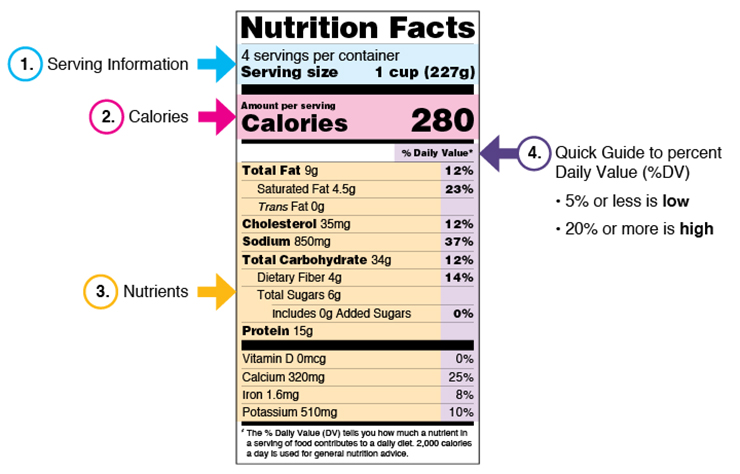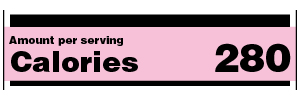Dear Jenn,
I’m in the process of losing weight, watching my diet carefully and keeping a food journal. I keep track of foods eaten, portion sizes, time of day eating, hunger levels before and after eating meals and total daily caloric intake. As you have mentioned in previous columns “weight is about the calorie.” Following your recommendations, I have reduced mine. Recently it came to my attention that commercial food items might have hidden calories not included in the calorie count on the package. Can you clarify? Is this true?
Sincerely,
Interpreting Food Labels
Dear Interpreting Food Labels,
Great question! And yes, to lose weight you must reduce caloric intake and increase expenditure. A food diary is highly recommended. It encourages accountability and helps keep focus on the weight goal. “Fat weight loss” takes time and effort; 3,500 calories must be burned to lose 1 pound. Therefore, weight loss is a process and must be worked on. I encourage regular exercise with caloric reduction for the best metabolic results for weight loss efforts. Let’s focus on this sample food label below to understand general information food labels provide.
- Serving Size (#1 on sample label)
When looking at the Nutrition Facts label, first look at the number of servings in the package (servings per container) and the serving size. Serving sizes are standardized to make it easier to compare similar foods; they are provided in familiar units, such as cups or pieces, followed by the metric amount, e.g., the number of grams (g). The serving size reflects the amount that people “typically” eat or drink. It is not a recommendation of how much you should eat or drink.

It’s important to realize that all the nutrient amounts shown on the label, including the number of calories, refer to the size of the serving. Pay attention to the serving size, especially how many servings there are in the food package. For example, you might ask yourself if you are consuming ½ serving, 1 serving, or more. In the sample label, 1 serving of lasagna equals 1 cup. If you ate 2 cups, you would be consuming 2 servings. That is two times the calories and nutrients shown in the sample label.
- Calories (#2 on sample label)
Calories provide a measure of how much energy you get from a serving of food. In the example, there are 280 calories in one serving of lasagna. What if you ate the entire package? Then, you would consume 4 servings, or 1,120 calories.

To achieve or maintain a healthy body weight, balance the number of calories you eat and drink with the number of calories your body expends as energy. Your caloric requirements depend on your age, sex, height, weight and physical activity level. Learn your estimated calorie needs at https://www.myplate.gov/myplate-plan.
Remember: The number of servings you consume determines the number of calories you actually eat. Eating too many calories per day is linked to overweight and obesity.
- Nutrients (#3 n sample label
Saturated fat, sodium and added sugars are nutrients listed on the label that are associated with cardiovascular disease and high blood pressure. Consuming too much added sugar can make it hard to meet important nutrient needs while staying within calorie limits.
What Are Added Sugars and How Are They Different From Total Sugars?
Total Sugars on the Nutrition Facts label includes sugars naturally present in many nutritious foods and beverages. These may include sugar in milk (lactose) and fruit sugar (fructose) as well as any added sugars that may be present in the product. No Daily Reference Value has been established for total sugars because no recommendation has been made for the total amount to eat in a day.
Added Sugars on the Nutrition Facts label include sugars that are added during the processing of foods. Commonly added are sucrose (table sugar), dextrose (corn or wheat sugar), sugars from syrups or honey, and sugars from concentrated fruit or vegetable juices.

Note: Having the word “includes” before Added Sugars on the label indicates that Added Sugars are included in the number of grams of Total Sugars in the product.
For example, a container of yogurt with added sweeteners, might list:
This means that the product has 7 grams of Added Sugars and 8 grams of naturally occurring sugars—for a total of 15 grams of sugar.

Dietary fiber, vitamin D, calcium, iron and potassium are nutrients on food labels that Americans generally do not get the recommended amount of. Eating a diet high in dietary fiber can increase the frequency of bowel movements, lower blood glucose and cholesterol levels, and reduce calorie intake. Diets higher in vitamin D, calcium, iron and potassium can reduce the risk of developing osteoporosis, anemia and high blood pressure.
- The Percent Daily Value (%DV) (#4 on sample label)
The Percent Daily Value (%DV) is the percentage of the Daily Value for each nutrient in a serving of the food. The Daily Values are reference amounts (expressed in grams, milligrams or micrograms) of nutrients to consume or not to exceed each day. The %DV shows how much a nutrient in a serving of a food contributes to a total daily diet.
General Guide to %DV
5% DV or less of a nutrient per serving is considered low.
20% DV or more of a nutrient per serving is considered high.
Dietitian Recommendations:
Consume Higher %DV for Dietary Fiber, Vitamin D, Calcium, Iron and Potassium
Reduce consumption %DV for Saturated Fat, Sodium and Added Sugar.
Facts That Affect Calorie Consumption in Commercial Food Product
- Calorie blockers are compounds that block some amount of carbs and fats absorbed after they are eaten. They can reduce the caloric influence of excess, although they may cause intestinal discomfort at higher doses.
- The calories listed on labels come straight from the manufacturers—and are regulated by the FDA. The agency allows for a 20% margin of error. Because of this, the caloric content is often higher than labeled, yet still within FDA limits. A 2013 study on the food label accuracy of snack foods found that their average caloric content was more than 4% higher than the calories listed. The researchers suggested this was because the foods contained more carbohydrates than listed.
- Beyond that, the counts on labels can be inaccurate for other reasons, too. The idea of calorie counts comes from 19th century American chemist Wilbur Olin Atwater, who created the current system by calculating the average number of calories in a single gram of protein, fat and carbohydrate. Yet different foods are digested in different ways, which has an impact on the calories you extract. For example, a series of studies by Agricultural Research Services found that people absorb fewer calories from nuts like almonds, walnuts and pistachios—which can be harder to digest completely—than the labels indicate.

- Research shows 98% of the calories in carbs are taken in and used by your body, 95% of the calories in fat, and only 92% of the calories from protein make it past your digestive tract. So, you’re shaving off a few calories simply because digestion and absorption aren’t perfect.
- Different people get different amounts of calories from food. Even the same person can absorb different amounts of calories from the same food depending on what else is going on in their body. Caloric intake is influenced by many variables, including age, sex, environmental temperature, energy expenditure, pregnancy, hormonal status and dieting behaviors.
Conclusion
There is a possible 20% margin of error in calories listed on commercial food products. In addition, as individuals we vary in our ability to digest, absorb, and accumulate nutrients and calories.
The following is a quick guide to reading the Nutrition Facts label.
Step 1: Start with the Serving Size.
Step 2: Compare the Total Calories to your individual needs.
Step 3: Let the Percent Daily Values be a guide.
Step 4: Check out the Nutrition Terms.
Step 5: Choose “low in saturated fat, added sugars and sodium.”
The Bottom Line
The calculated number of calories in a food or meal assumes you’re able to digest and absorb all the macronutrients, which is seldom the case. You likely take in fewer calories when you eat whole foods, foods high in fiber and resistant starch, and foods that are uncooked and haven’t been exposed to heat. Now you have another reason to add more whole, unprocessed foods to your diet.
References:
PR Newswire. “New study shows almonds have 20% fewer calories than originally thought”
Scientific American. “The Hidden Truths About Calories”
Nutr Clin Pract. 2012 Apr; 27(2): 201-214. Published online 2012 Feb 24. doi: 10.1177/0884533611436116.
Yours in Good Health,
Jenn
718-644-1387









